Table Of Contents

Sonia Mutreja

Akshata Tiwarkhede
New-Age Agriculture Equipment: Plowing Ahead

The agriculture equipment market is at a pivotal juncture in 2024, propelled by advancements in technology and the pressing need to address global food security challenges. Increased production of cereals, grains, and oil seeds, which necessitates intensive harvesting procedures, has intensified the need for modern agriculture equipment to maximize yield and minimize waste.
Acing Agriculture with Advancements in Technology
Earlier, agriculture relied on hand-held equipment, which made tasks such as ploughing, harvesting, and watering labor-intensive and time-consuming. With the advent of tractors, JCBs, and other motorized equipment, the agriculture sector is gradually progressed toward complete mechanization. Furthermore, the introduction of precision agriculture equipment has helped in managing and improving crop yield by deploying GPS-enabled tractors and precision mobile drip irrigation systems.
Presently, the integration of AI-powered agriculture equipment is not only enhancing farm efficiency but also is pushing the boundaries of sustainable and informed farming practice. Thus, AI will revolutionize agriculture equipment with higher levels of productivity, sustainability, and resilience, marking a significant shift toward optimizing production and improving yields.
AI in Agriculture Equipment: The Future of Farming
The increasing penetration of AI-driven agriculture equipment such as autonomous electric tractors and robotic milkers has significantly helped in optimizing production, improving yields, and mitigating climate change impacts. AI is transforming agriculture by offering unprecedented insights into crop & soil conditions, pest management, and livestock health. This transition is further driven by the dual pressures of improving operational efficiency and sustainability, with companies like CNH and John Deere at the forefront, responding to the increased demand for AI-based agriculture equipment.
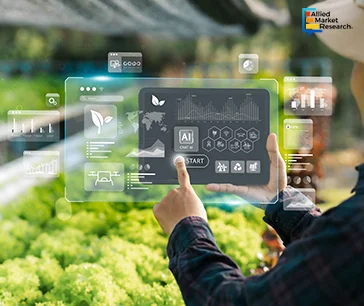
One notable development by CNH is the integration of AI and IoT technologies in its agricultural machinery. By leveraging AI, CNH's equipment can analyze massive volume of data related to crop and soil conditions, weather patterns, and equipment performance in real time. This enables farmers to make more informed decisions regarding planting, irrigation, fertilization, and harvesting, thereby leading to improved yields and resource optimization.
On the other hand, John Deere’s line of autonomous tractors and robotic systems can perform a wide range of tasks, including planting, spraying, and harvesting, with minimal human intervention. By utilizing AI algorithms and advanced sensors, John Deere's autonomous systems can optimize operations in real time, adjusting to changing environmental conditions and maximizing efficiency.
Furthermore, in July 2023, John Deere acquired Smart Apply, an Indianapolis-based precision spraying equipment company. Smart Apply's Intelligent Spray Control System™ enhances the precision and efficiency of sprayers, reducing chemical use, airborne drift, and runoff while optimizing yields. Leveraging LiDAR and GPS-enabled software, this technology adjusts spray volume based on foliage density, capturing comprehensive data for enhanced productivity and sustainability. By integrating Smart Apply solutions into its dealer network, John Deere aims to expand access to advanced agricultural tools, fostering innovation and sustainability in farming practices worldwide
Thus, the integration of AI technologies plays a crucial role in revolutionizing the agricultural sector by enhancing efficiency, optimizing resource management, and enabling data-driven decision-making, leading to increased yields, reduced environmental impact, and sustainable food production for a growing global population.
Progressing with Precision Farming
Advancements in agriculture equipment have progressed swiftly, particularly with the rise of precision agriculture, which serves as a modern approach to use information technology to ensure that crops and soil receive exactly what they need for optimum health and productivity. Thus, with leap in connectivity, enhanced by the rollout of advanced networks like NB-IoT and 5G, the global food production is estimated to reach $175 billion by year 2030, facilitating precise crop monitoring and resource optimization. Such growth is indicative of a technology that has moved beyond the emerging phase and is establishing itself within the agricultural sector.
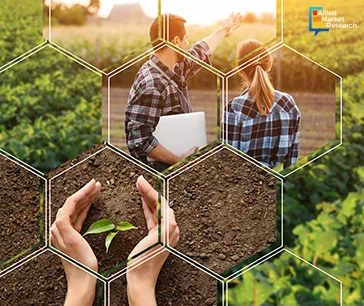
Farmers complete precise production tasks within extremely short windows of time along with coordinating between machines and managing machine performance. To make these operations more effective, efficient, and profitable, John Deere and SpaceX entered into a partnership in January 2024 to utilize the Starlink network for enhancing rural connectivity. This solution underscores the sector's direction toward leveraging cutting-edge satellite communications for precision agriculture technologies. Thus, this emphasizes the growing importance of connectivity and data in farming operations, enabling farmers to access real-time information and analytics for better decision-making.
In addition, the environmental and operational efficiencies associated with precision agriculture are significant. For instance, the technologies such as fleet analytics, and precision irrigation through more efficient farming practices highlight the impact of precision agriculture. These technologies not only improve productivity and reduce input usage but also offer substantial environmental benefits. For instance, data from a survey of commercial farmers in 2019, by Purdue University’s Center for Commercial Agriculture, indicates a high level of satisfaction with the results of precision agriculture, particularly in decisions related to fertilizer, seeding rates, and drainage.
The need for such technologies is underlined by a series of challenges, including climate change, water & energy shortage, and increasing food security concerns. While precise quantitative data for the potential savings from adopting precision agriculture technologies by 2030 may vary depending on specific factors such as farm size, location, and practices, there are estimates and studies that provide insights into the potential impact.
Carbon Dioxide Equivalent (CO2e) Emissions Reductions: According to a study published by the American Society of Agronomy in 2018, precision agriculture practices have the potential to reduce greenhouse gas emissions by up to 20% through optimized fertilizer use, reduced tillage, and improved irrigation efficiency. This reduction could translate into significant savings in CO2e emissions by 2030, although exact figures would depend on the scale of adoption.
Cost Savings for Farmers: The adoption of precision agriculture technologies can lead to cost savings for farmers through various means such as reduced input usage, increased yields, and more efficient use of resources. A study conducted by the University of Nebraska-Lincoln in 2017 found that farmers using precision agriculture technologies experienced an average cost savings of $20 to $25 per acre. Extrapolating this to a larger scale and accounting for potential advancements in technology by 2030 could lead to substantial overall cost savings for farmers.
These projections highlight the significant potential for both environmental and economic benefits associated with the widespread adoption of precision agriculture technologies by 2030. Actual outcomes may vary based on numerous factors, but the overarching trend suggests positive impacts on both emission reduction and cost savings for farmers.
Furthermore, studies highlight the correlation between increased adoption of precision agriculture tools and rising yields, demonstrating the tangible benefits these technologies bring to the agricultural sector. In addition, robotic technologies are gaining high traction in agriculture, addressing the persistent challenge of labor shortages while improving precision in farming and harvesting operations. Moreover, the adoption of data software products and the sharing of farm data with service providers have been associated with more data-influenced decision-making in farming practices. Thus, the agricultural sector is expected to grow significantly, underscoring the increasing reliance on automation and robotic technologies.
Taking on Board the Factors Shaping the Market
For improved monitoring and management of crops and livestock, the use of IoT has been witnessed to increase in the agriculture sector. In addition, the penetration of AI and machine learning for improved predictive analytics and the development of sustainable agriculture solutions through hydroponics and aquaponics is indicative of the market's evolving dynamics. Although manufacturers and dealers are adapting to the evolving landscape, they are expressing concerns about farmer consolidation and the impact of interest rates on equipment financing. However, innovative financing solutions and growing interest in practices such as reduced tillage and cover cropping reflect the industry's responsiveness to these challenges.
Unveiling Cutting-edge Agriculture Equipment
The agriculture equipment market is characterized by a blend of rapid technological advancement traditional farming practices aimed at addressing key global challenges. For instance, rapid adoption of IoT devices, precision agriculture, and robotics is revolutionizing the sector, aiming to overcome critical challenges such as labor shortage, climate change, environmental degradation, and infestation by pests & diseases. To mitigate these issues, the companies such as Monarch Tractor and Croft are pioneering with autonomous tractors and digital platforms. For instance, one key feature of Monarch Tractor's autonomous tractor is its ability to operate electrically, reducing the reliance on fossil fuels and minimizing carbon emissions. In addition, Monarch Tractor's digital platform provides farmers with real-time data and analytics, allowing them to monitor and optimize their operations remotely. This integration of automation and digitalization not only improves operational efficiency but also promotes environmentally friendly farming practices. Similar to Monarch Tractor, Croft's autonomous tractors are equipped with advanced technologies that enable them to perform various tasks autonomously, such as plowing, seeding, and spraying.
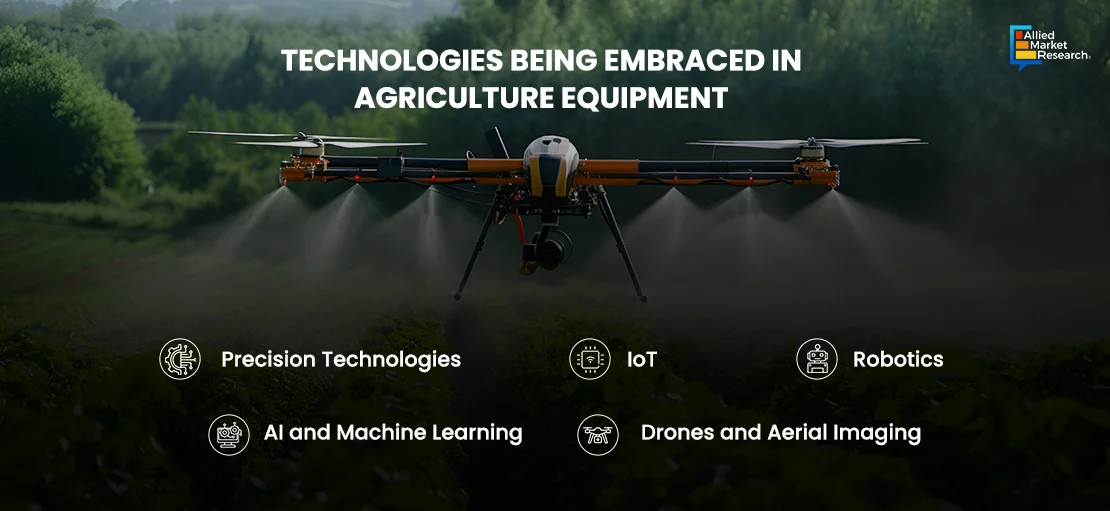
Thus, advanced agriculture equipment will significantly enhance efficiency and productivity by enabling precise monitoring, management, and execution of farming tasks. Moreover, these technologies have the potential to reduce labor requirements, optimize resource utilization, and mitigate environmental impact, leading to more sustainable and profitable agricultural practices.
The market is characterized by a mature yet evolving technology base, with major firms and start-ups contributing to the competitive environment. The giants such as Deere & Company, CNH Industrial, and Mahindra Agriculture North America highlight a competitive landscape, which fosters continual growth and technological advancements. Recent advancements in satellite technology and IoT have revolutionized agricultural monitoring, offering farmers unprecedented insights into crop and livestock management. High-resolution satellite imagery from companies like Planet Labs and DigitalGlobe provide detailed views of fields, aiding in detecting issues such as pest infestations and nutrient deficiencies. Synthetic aperture radar (SAR) satellites, such as Sentinel-1 and RADARSAT, offer continuous monitoring capabilities, particularly useful for tracking soil moisture levels and changes in land use. Moreover, IoT-enabled sensors from manufacturers such as Libelium and Davis Instruments collect real-time data on environmental conditions and livestock health, empowering farmers to make informed decisions for optimized production and minimized environmental impact.
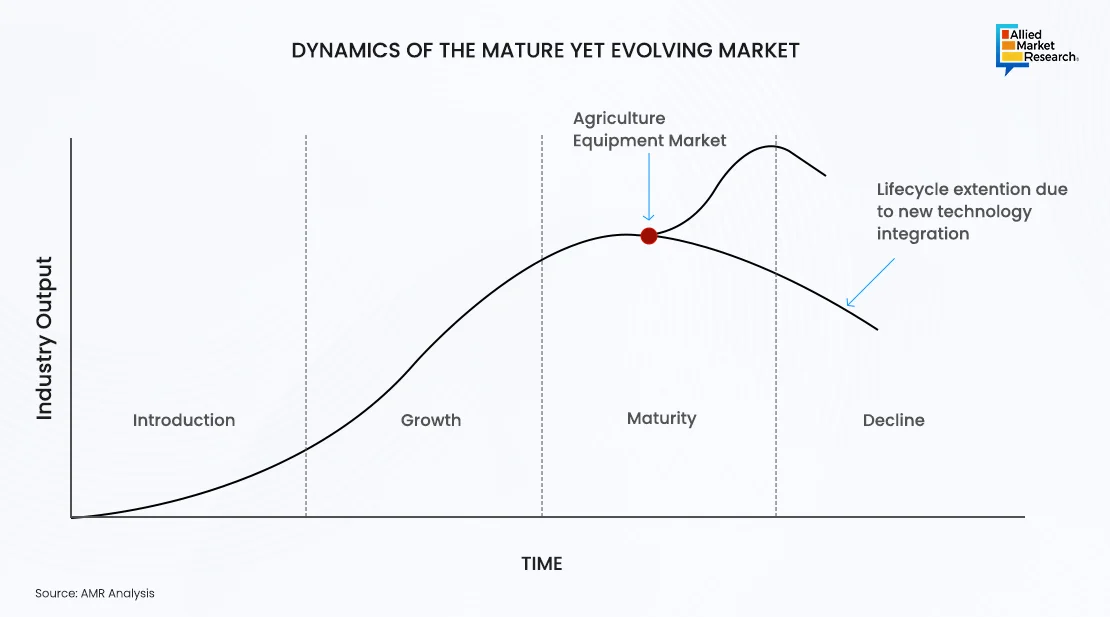
However, the adoption of these advanced technologies faces hurdles, including data variability, connectivity quality, and their application in smaller scale operations. These challenges underscore the need for scalable solutions that can accommodate the vast diversity of the agricultural sector. Despite these obstacles, the potential of the technologies to transform agriculture is immense, offering pathways to address food security, improve resource efficiency, and reduce the environmental footprint of farming practices.
From Agriculture to AgTech
With growing number of agricultural start-ups and investors, the agricultural industry is on the verge of turning into a high-tech industry. In addition, exponentially growing population, increasing penetration of smart agricultural technologies, and rising need for improved yield efficiency are the megatrends that are intensifying the transformation of agricultural sector to AgTech industry.
Although traditional venture capital firms are steadily being involved, major market players are heavily investing in the AgTech industry. For instance, in 2023, Bayer, a leading agriculture company, announced an investment in Rantizo, a drone spraying start-up. This investment aimed to support Rantizo's development of agriculture drones for crop spraying, pest control, and precision agriculture. Thus, venture capital interest in the AgTech sector remains strong, driven by the recognition of agriculture's critical role in addressing global challenges such as food supply and sustainability.
In addition, AgTech solutions, exemplified by precision agriculture, have demonstrated tangible benefits in reducing emissions, cutting costs for farmers, and fostering sustainability. For instance, the implementation of precision irrigation systems such as Taranis' AI-powered platform enables farmers to optimize water usage by delivering the right amount of water, at the right time, and in the right place. This not only reduces water wastage but also minimizes energy consumption associated with irrigation pumps, leading to lower emissions.
Similarly, the adoption of autonomous electric vehicles like the Monarch Tractor offers significant savings in fuel costs and emissions compared to traditional diesel-powered tractors. These electric tractors utilize renewable energy sources and advanced battery technology to operate efficiently while minimizing their carbon footprint.
Furthermore, advancements in crop monitoring technologies, such as satellite imagery provided by companies like Planet Labs, enable farmers to precisely assess crop health and nutrient needs. By applying fertilizers and pesticides only where and when needed, farmers can reduce chemical usage and associated emissions while improving crop yields.
Thus, AgTech solutions, particularly those based on precision agriculture principles, are making significant strides in reducing emissions, lowering costs, and promoting sustainability within the agricultural sector.
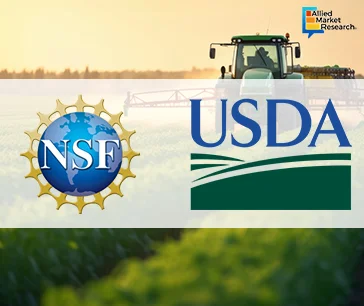
Funding to Fuel the Future of Farming
Federal agencies, including the USDA and the National Science Foundation, have invested heavily in supporting the adoption of precision agriculture through financial assistance, R&D funding, and education. For instance, in August 2023, the Government of Canada, through the Agriculture and Agri-Food Canada, announced an investment of up to $31,796 in the François Delorme farm in Verner, Ontario, under the Adoption Stream of the Agricultural Clean Technology (ACT) Program. This funding will support the purchase of fertilizer spreader equipment with variable rate technology, enabling precise nutrient application, reducing fertilizer usage, decreasing greenhouse gas emissions, and cutting fuel consumption by 50%. The initiative aims to help the agricultural sector adopt clean technologies to mitigate climate change while supporting a low-carbon economy. François Delorme, the farm operator in Verner, Ontario, expressed gratitude for the program, highlighting its role in modernizing farming practices, reducing emissions, and enhancing sustainability. This investment is part of the Government of Canada's commitment to investing in clean technology and supporting the agricultural sector's transition to sustainable practices. These efforts underscore the recognized potential of precision agriculture to enhance farm productivity while addressing critical environmental concerns.
Final Thoughts
The integration of IoT devices across farms worldwide is set to streamline operations, enabling real-time tracking of environmental conditions and crop health. Despite inherent challenges, the collaborative efforts of technology providers, policymakers, and the farming community are integral to realizing a vision of efficient, sustainable, and highly productive agriculture. Sustainability remains a dominant theme, with a clear move toward practices that reduce environmental impact. Innovations in this area focus on the precision application of inputs, soil health improvement, and renewable energy integration, marking a shift toward more ecologically responsible farming.
For further insights, get in touch with AMR analysts.

